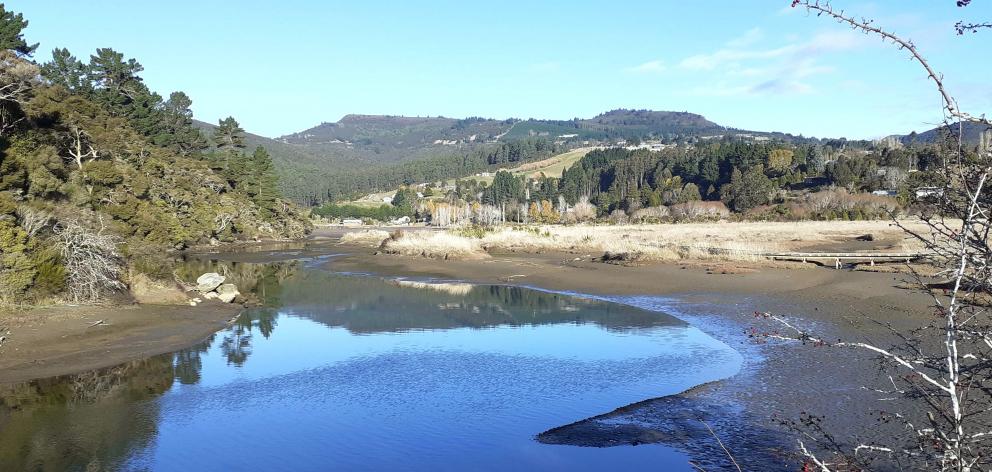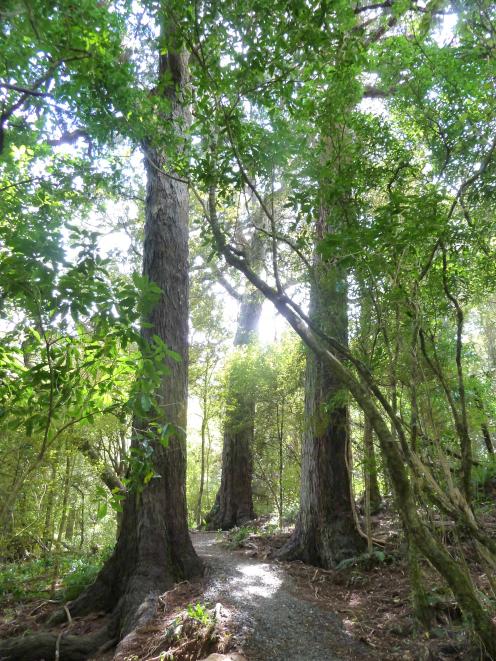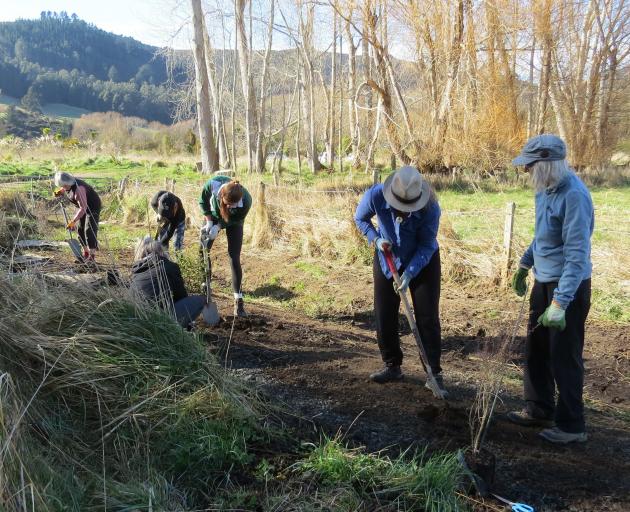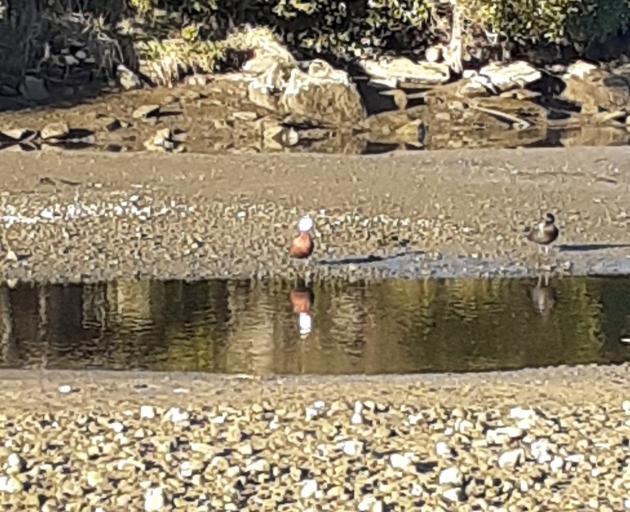

Having gathered the run-off from the hills around the steep-sided Orokonui Valley, the stream enters the ecosanctuary just below Blueskin Road, accumulating water from tributaries on its descent through the bush, and leaving the sanctuary again to merge with the Waitati stream at the estuary on Blueskin Bay. It forms the central seam of the cloak of bush that clothes the valley from the peak of Mihiwaka almost to the shore of Blueskin Bay, the Korowai o Mihiwaka, the name given to the ecosanctuary by Kati Huirapa of Karitane.
In its upper reaches, the stream is hard to find. Only the teams doing pest monitoring encounter it, clambering down slippery banks to cross it. Few visitors wander along the pretty Fuchsia Gully track that leads from the Clearing to the stream, but those following the Robin Valley track downhill gradually approach it through kanuka forest. Here robins suddenly appear at one's feet, and riflemen can be spotted as they run up and down kanuka trunks, poking their beaks behind the loose bark in search of invertebrates.

Lower down the valley three bridge crossings allow a better view of the water. In the dryness of recent months it has been little more than a trickle, belying the torrent it can become in the worst of winter weather.
Near one of the bridges an information panel describes the native fish species that can be found in the stream. At low water it is hard to believe that anything much could live there, yet an investigation some years ago by Ruth Clucas of Doc established the presence of banded kokopu, koaro, redfin bully, longfin eels, and koura.
Further on you may spot an indistinct semi-circular track that will take you close to the water's edge, along a bank dense with ferns. In late spring spider orchids can be found there, and in damp weather filmy ferns.

Having passed through the messy but wonderful eucalypts and stopped to admire the tallest of them, New Zealand's tallest tree, you will soon reach the bottom pedestrian gate. Stop awhile on the sunny seat here and watch and listen. You may see kaka flying over, a tomtit flying in to a nearby branch, fantails flitting about you and in the eucalypts you will hear the chatter of eastern rosella, all against a stereo chorus of bellbirds.

Since then a small group of volunteers has laboured to keep the plants free of weeds and have planted many more, replacing those lost to the flooding streams. Slowly, many have established well, enhancing the estuary walkway Waitati residents have come to love. If you follow the stream to the bridge over the mouth of the estuary you will likely see kingfishers perched on the wires above, or even a seal following the inflowing tide in search of a meal.
As the plantings of the estuary area grow, creating a fringe to the Orokonui valley's korowai, the biodiversity will increase, attracting, it is hoped, the return of more of the seabirds that once were found here.
Alyth Grant is a regular volunteer at Orokonui.











